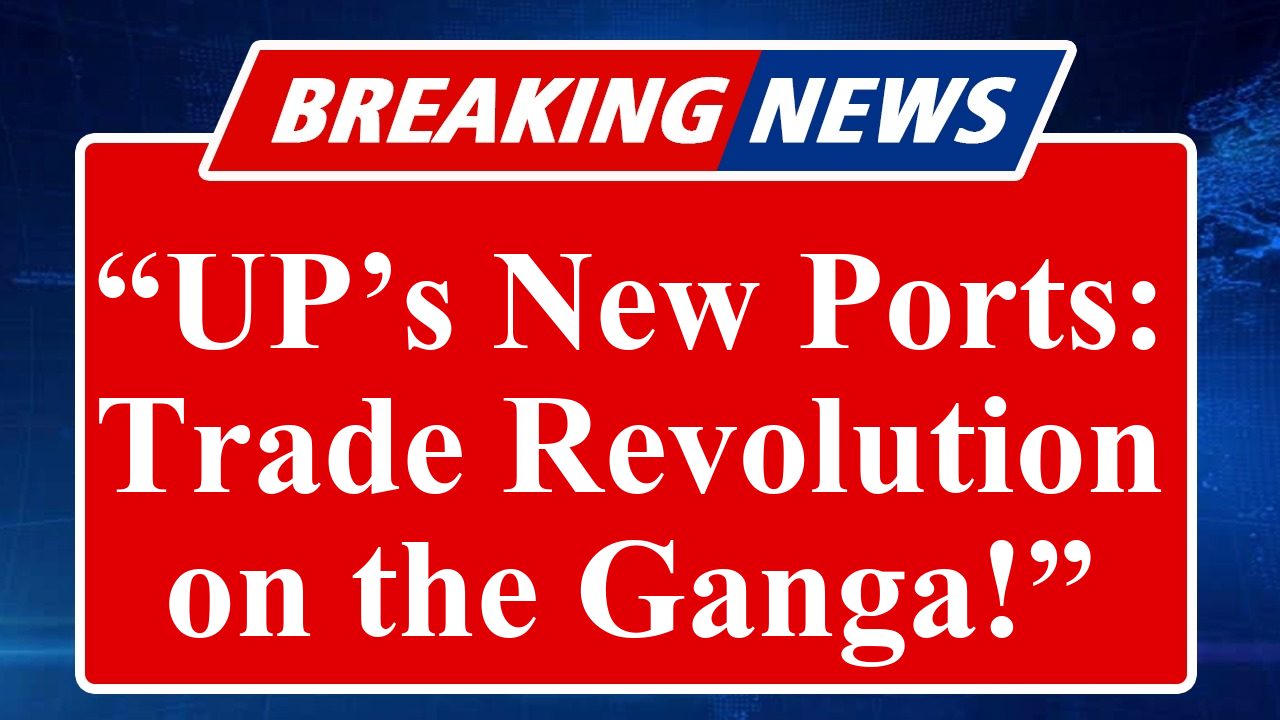Uttar Pradesh is transforming its trade landscape with new inland ports along National Waterway-1, enhancing connectivity and reducing logistics costs. The state’s strategic focus on waterways like the Ganga aims to facilitate cargo movement, promote economic growth, and integrate with regional trade networks. These developments align with India’s vision to increase the modal share of inland water transport by 2030.
Uttar Pradesh’s Inland Ports: A New Era for Trade
Uttar Pradesh, a key economic hub in northern India, is leveraging its extensive river network to revolutionize trade through the development of new inland ports along National Waterway-1 (NW-1), the Ganga-Bhagirathi-Hooghly river system. Spanning 1,620 km from Haldia in West Bengal to Prayagraj in Uttar Pradesh, NW-1 is the country’s longest and most significant waterway, pivotal for cargo and passenger transport. The state’s strategic push to develop inland ports is part of a broader vision to enhance connectivity, reduce logistics costs, and boost regional trade, aligning with India’s Maritime India Vision 2030, which aims to increase the modal share of inland water transport (IWT) to 5% by 2030.
The Inland Waterways Authority of India (IWAI), established in 1986, is spearheading these efforts under the Ministry of Ports, Shipping, and Waterways. Recent data highlights a remarkable surge in cargo movement, with NW-1 handling 9.6 million tonnes (MT) of freight in FY24, a significant increase from previous years. The state’s new inland ports, particularly in Varanasi and Prayagraj, are central to this growth. Varanasi’s multi-modal terminal, operational since 2018, has become a key hub for cargo handling, facilitating the movement of goods like coal, cement, and food grains. The terminal’s integration with road and rail networks under the PM Gati Shakti initiative ensures seamless logistics, reducing transit times and costs.
In FY25, India recorded a historic 145.5 MT of cargo movement across national waterways, reflecting a compound annual growth rate (CAGR) of 20.86% since FY14. Uttar Pradesh’s contribution to this growth is notable, with its inland ports serving as critical nodes for trade with neighboring states and countries like Bangladesh and Bhutan via the Indo-Bangladesh Protocol Route. The protocol, renewed in 2015, allows vessels to transit through designated routes, with new ports of call like Jogighopa in Assam enhancing connectivity to UP’s waterways. A recent milestone was the successful docking of a cargo ship carrying food grains from Patna to Pandu, linking NW-1 with NW-2 (Brahmaputra), showcasing the potential for inter-state and international trade.
The development of these ports is supported by significant investments, with the IWAI planning ₹35,000 crore by 2047 to enhance navigability and infrastructure. The Jal Marg Vikas Project (JMVP), backed by a $375 million World Bank loan, focuses on improving NW-1’s fairway, terminals, and navigational aids. In UP, dredging and bandalling ensure a minimum depth of 2.5–3 meters for year-round navigability, particularly in the Haldia-Tribeni stretch. The state is also adopting eco-friendly measures, such as green vessels and restricted dredging in sensitive ecological zones, to balance development with environmental sustainability.
Public-private partnerships (PPPs) are driving terminal development and vessel manufacturing, with incentives like a three-year waiver on waterway user charges attracting private investment. The state’s focus on integrating waterways with rail and road networks, as recommended by the Standing Committee on Transport, Tourism, and Culture in 2023, addresses hinterland connectivity challenges. This intermodal approach is expected to reduce India’s logistics costs, currently at 13–14% of GDP, compared to 8–9% in developed economies.
UP’s inland ports are also poised to boost tourism and regional connectivity. The MV Ganga Vilas, the world’s longest river cruise launched in 2023, connects Varanasi to Dibrugarh, covering NW-1 and NW-2, and has spurred interest in river cruise circuits. The IWAI’s digital portal for National Waterways, launched in April 2025, streamlines jetty and terminal construction, further supporting tourism and trade. Additionally, the state’s collaboration with Bangladesh for protocol routes enhances trade prospects for landlocked regions like Bhutan and Nepal.
Despite these advancements, challenges remain. Seasonal water level fluctuations in the Ganga, high vessel costs, and slow development dieting rate development hinder the modal shift to waterways, which currently account for only 2% of India’s freight movement, compared to 14% in China. The Standing Committee emphasized the need for financial incentives and improved loading facilities to address these issues. Uttar Pradesh’s government is actively tackling these challenges through subsidies and infrastructure upgrades, positioning the state as a leader in India’s inland waterways revolution.
Disclaimer: This article is based on information from government reports, IWAI announcements, and recent developments in India’s inland waterways sector. Data is sourced from reliable outlets, but readers are advised to verify details independently.

